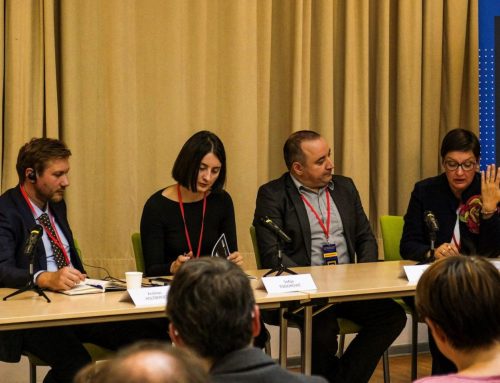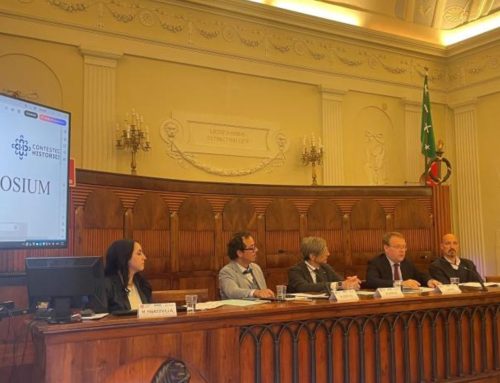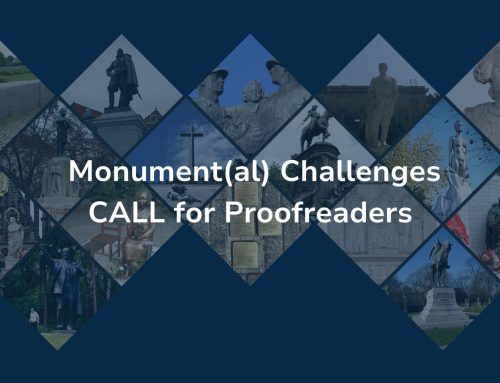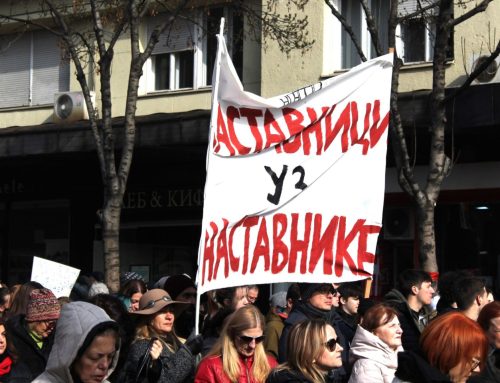The thematic seminar on “Teaching European Integration. How and Why?” took place from 22 to 24 November 2019 at the House of European History in Brussels, Belgium. It was organised by EuroClio in collaboration with the House of European History with the aim of introducing new methods to teach about European Integration.
The programme was built around active workshops where new materials were introduced and participants had a chance to exchange their experiences.
The seminar started with words of welcome from EuroClio Executive Director Steven Stegers, from the Head of the House of European History Constanze Itzel, and the Head of the Learning and Outreach Department at the House of European History Ewa Goodman. Then, the programme continued with a keynote lecture by Liesbeth van de Grift making the case for teaching European Integration. The lecture focused on the strategies that participants to the seminar already use when it comes to Teaching European integration. Then, participants dived right into the first possible teaching method: a visit to the permanent exhibition of the House of European History, using the activity sheet for schools. This was followed by a walking tour of the European neighborhood.
The second day of the seminar consisted of a series of active workshops. Helen Snelson, member of the Historiana Teaching and Learning Team, hosted two workshops with materials taken from Historiana.eu. First, she introduced several strategies and activities of teaching EU history. In particular, she put the EU in its broader historical context, showing participants how to connect it to the bigger picture of the history of the European Continent from 1648 (Westphalian Peace) to today. In doing so, Helen introduced also a series of concepts that related to conflict management, and that students might find hard to approach. The activity she used is available at this link. Going further in detail, she tackled the question ‘What makes it possible for Europe to work together and operate as a global power and what are the criteria?’, where she presented examples of successful and unsuccessful cooperation between EU countries, in an effort of establishing what are the features of successful cooperation and global power.
Laurence Bragard introduced the different activities developed by the House of European History. She focused on an activity about the Elections of the European Parliament, in which students analyze the 1979 campaign for the first elections of the EP, comparing it with posters and social media campaign from 2019. This inspiring activity, in which students are gradually introduced to the concept of representative democracy within the EU, is available for free on the website of the House of European History.
Finally, participants had a sneak preview of the toolkit on “how can we best deal with migration?”, developed as part of the VPRO-led project “In Europe at School”. This toolkit makes use of clips from the TV series “In Europe Now” to teach about migration movements in Europe, and to promote critical thinking in students. At the end of the activities of the toolkit, students make their own mini-documentary on the topic of migration. The material was received well by all participants, who suggested new ways of using and improving the toolkit and expressed their interest in the results of the project.
The last day of training kicked off at European Parlamentarium, where participants tried Role-Play Game designed for high school students. There, they had a chance to become Members of the European Parliament and negotiate two (mock) directives. It was an interesting activity, which ask everyone to exit from their comfort zone and take part in debates, journalists’ interviews, lobby missions, and working group meetings.
Finally, Laurence moderated a workshop on identity, and on how people construct their identity. This is a rather sensitive concept, difficult for students of primary or secondary schools to grasp. The activity developed by the House of European History presents a series of step-by-step exercises that guide teachers and students in exploring their own identity(ies), how are identities constructed, and how are identities used to build narratives of inclusion/exclusion.
All in all, the seminar was a successful and inspiring training, where participants from all across Europe got to know about new instruments to teach about the European Integration, and shared their own experiences, challenges, and solutions to a problem, how to interest pupils in EU integration and high politics, that was shared by them all.
We would like to thank all the people that participated to the seminar, as well as the speakers: Laurence Bragard, Helen Snelson, Daniel Bernsen. A great thanks goes to the House of European History and all its staff for co-organizing the seminar and giving us the opportunity of visiting their inspiring permanent and temporary exhibitions.













